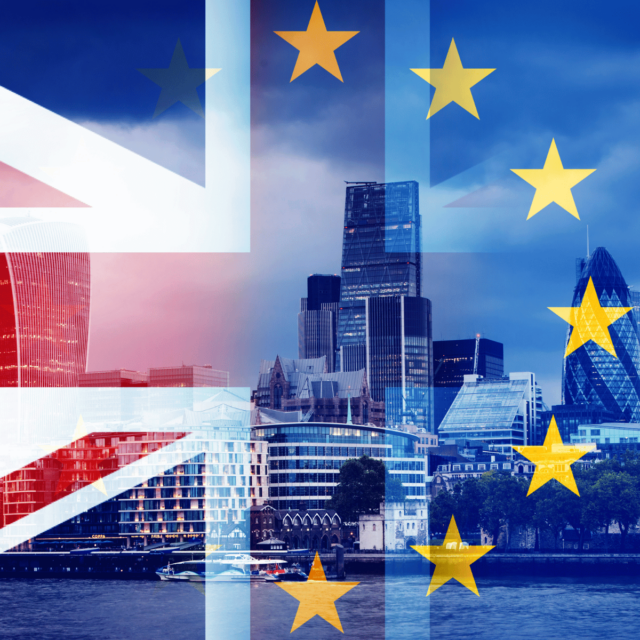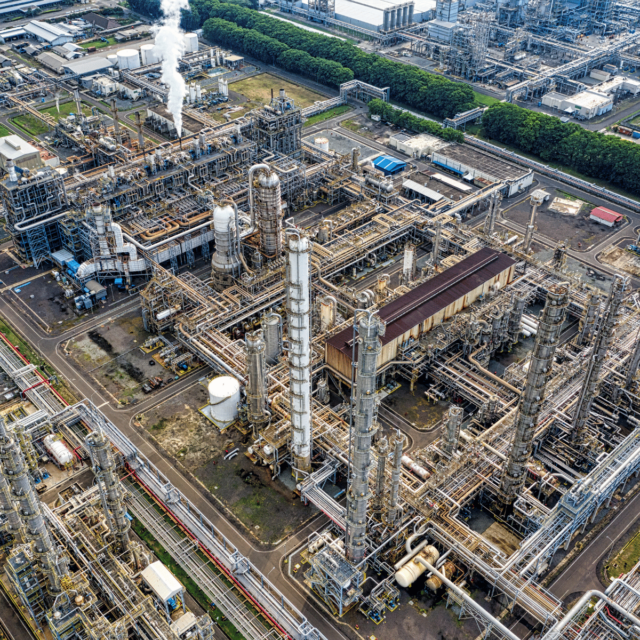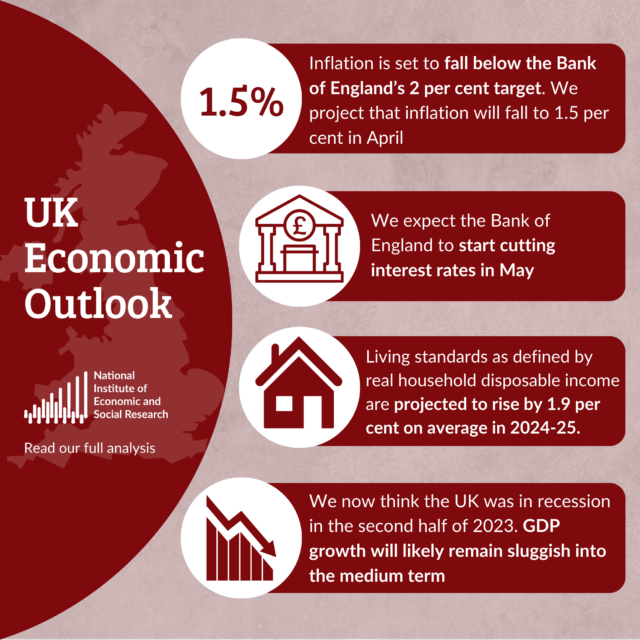UK Trade and the Exchange Rate
In today’s Monday interview, our Deputy Director for Macroeconomics, Stephen Millard, interviews NIESR Fellow Paul Mortimer-Lee about the recent UK trade performance and the role of the exchange rate in attempts to improve it.

The most recent ONS data published in March showed that UK export volumes, excluding precious metals, in 2022 Q4 were more than 9 per cent below the 2019 pre-pandemic average. Is this a Brexit effect?
There is undoubtedly a Brexit effect, yes. Both imports and exports between the UK and the EU dropped during Covid, which began at the same time as Brexit, so untangling the two effects is tough. Other countries also saw a drop in trade volumes at the same time, due to Covid and supply chain disruptions. However, while many other countries’ exports bounced back as Covid and supply chain issues waned, the UK’s trade volumes recovered by far less. Red tape and border checks are part of the story, which can be particularly important for firms with just-in-time inventory management. Amongst potential pitfalls that were avoided, however, was a deal on “rules of origin” in the car sector, and on avoiding tariffs on automotive products between the UK and the EU.
What is concerning is that the volume effects have been so large, which suggests significant losses in gains from trade. The greater the elasticities of demand and supply, the larger the gains from trade are in terms of consumers’ and producers’ surpluses, and so the larger are the losses when trade restrictions bite. How those losses are distributed between the EU and the UK is uncertain. One of the ways the UK could lose gains from trade is through higher prices. If imports from the EU decline because of Brexit, UK importers will switch to either domestic production or imports from outside the EU, both of which would imply higher costs and therefore prices. The extent to which this has occurred is unclear. For example, several commentators believe that Brexit contributed to the UK’s 19.2% increase in food prices year on year in March. However, EU food prices rose by 19.5% over the same period, so it is difficult to identify a Brexit effect. What is behind the rise in food prices in Europe – where they have risen twice as fast as in the US – is disrupted supplies from Ukraine and Russia and higher energy costs, which have pushed up prices of food, feed, and fertilizer.
While a good portion of weaker UK exports to the EU can be attributed to Brexit, weakness in the UK’s exports outside the EU is more difficult to explain. In the last three months, exports of goods excluding precious metals to non-EU countries were down 13 per cent in volume terms on the average 2019 level. Supply chain disruptions, which are easing, may be part of the story. A more worrying question is whether the weakness in UK exports reflects a deeper lack of competitiveness and the economy’s poor resilience to recover from shocks. The UK’s exceptionally slow recovery after Covid – we seem to be stuck at 2019’s level of GDP – suggests that “pre-existing conditions” have rendered the economy vulnerable to adverse shocks. However, manufacturing production in the three months to February was up more than 4% compared with average 2019 level, which points to manufacturers preferring to produce for the UK market, possibly because it is more profitable than selling overseas, and thus raises questions about competitiveness but also poses a question about potentially excessive UK demand, which may also be contributing to inflation.
Where does the exchange rate fit in to this story?
The real effective exchange rate of sterling fell by 11% from May 2016 to March 2017, following the Brexit vote, having strengthened significantly prior to 2016, partly reflecting the weakness in the euro after 2010 due to the euro crisis, as well as the onset of European Central Bank Quantitative Easing in 2014. Since 2017, sterling’s real effective rate has been more or less flat, as has that of the euro area, so that exchange rate movements since 2019 do not appear to be part of the story.
Could an exchange rate depreciation help encourage the manufacturing sector and boost investment and productivity?
A softer UK exchange rate would improve the competitiveness of UK exports and would enable UK producers to compete more effectively with imports. This would be particularly important for some sectors. For example, about 80% of UK car production is exported, with the lion’s share destined to the EU. However, cars contain about 30,000 components and a lot of those are imported, so the profitability of auto exports would not increase as much as we might think at first Moreover, Rome wasn’t built in a day, and neither are car plants. It would take considerable time for an exchange rate fall to result in higher manufacturing capacity.
There is a significant issue to how to achieve a lower exchange rate. Cutting interest rates is one possibility, but a softer exchange rate would provoke higher inflation and inflation expectations and so would conflict with the Bank of England’s inflation target. This looks like a dead end unless the policy framework shifts. Encouraging more capital outflows in the financial accounts or acting to slow capital imports would soften the exchange rate but would also leave less funding for domestic investment.
Reducing domestic demand, for example, through tighter fiscal policy, would allow the Bank to cut interest rates, lowering sterling, .and seems the most promising route. While improving the supply side of the economy could reduce price pressures, a stronger economy would by itself tend to appreciate the exchange rate, limiting competitiveness gains.
Firms would only increase investment targeted at increasing exports if they were convinced that the fall in the real exchange rate would be persistent. The chief worry here is that sterling’s fall would push up prices and that over time wages would respond, progressively eating away at, and finally completely negating, the initial improvement in competitiveness.
How could the UK authorities resist this higher inflation? The usual route to fight inflation is through higher interest rates. However, higher UK interest rates would push the exchange rate back up, reducing the competitiveness gain. Another route would be to tighten fiscal policy, to create more slack in the domestic economy, including the labour market, so that higher wages would not offset the competitiveness gained from the fall in the exchange rate. Tighter fiscal policy might also allow the Bank of England to cut interest rates, which would be a further incentive to increase investment. However, tighter fiscal policy and higher prices following from a weaker exchange rate implies a further squeeze on household living standards, which looks like a difficult political pill to swallow.
Ultimately, raising exports means reducing domestic demand because there are finite supplies of labour and capital. Producing more exports means producing less of something else. Britain’s long-sustained balance of payments deficit reflects a shortfall of savings relative to domestic investment. If the UK wants to export more and improve its balance of payments, it will have to consume less.
Related content:
EVENT – Watch our Dow Lecture with Philip Lane on the Euro Area Hiking Cycle
PROJECT – Evaluating the Impact of Trade and Investment Assistance on the UK Economy






















